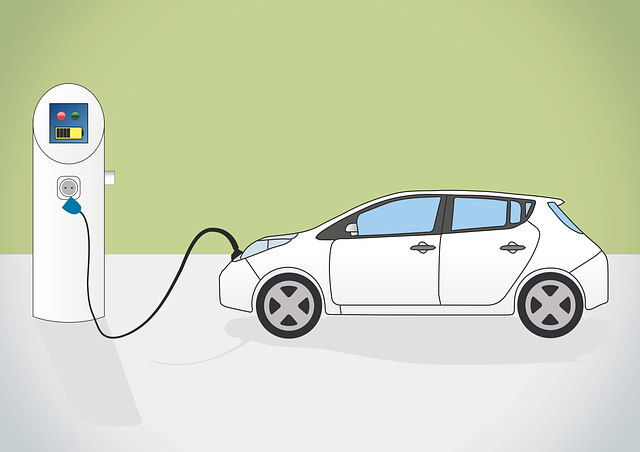
With the increase in Electric Vehicles’ availability in Midwest states, it is time to acknowledge the opportunities for charging EVs at the MISO regional grid operator level. Compared to other grid operators, MISO is unique due to its decreasing fossil-fueled power generation output and increasing the renewable output. Unlike California, MISO does not have a duck curve problem yet. Hence, now is the time to act on policy goals to include EVs’ impact on the Midwest electric grid. The regional grid operator estimates both electrification and EVs will add almost 50% to the annual energy and peak demand forecasts in the next 20 years.
This blog is part 1 of a 3-part series of posts to make the case on why EV prospects are looking brighter in the Midwest, despite the fact that none of the Midwest states is California.
What if Midwest sees high EV penetration like Europe?
General Motor’s announcement to go all-electric by 2035 (30 new EVs by 2025) was soon surpassed by GM’s Super Bowl advertisement featuring Will Ferrell. That GM ad shows, Norway has more cars per capita than any other country in the world.
It would be hard to assume EV growth in any US state like Norway, where 76% of all new cars sold were electric in March 2019. But if similar aggressive EV penetration takes off in the region, the Midwest grid operator planning engineers estimate a 50% jump in energy estimate by 2040.
The uniqueness of the Midwest electric grid lends itself to reliable charging EVs at night time – Dump Energy challenges for operators
If there is one thing that the control room operators want to shout to non-energy folks with a megaphone, it’s that they want units with better controls that can be dispatched in both directions – increasing and decreasing the unit’s output. But at the same time, experienced operators know that some units are “Steady Eddie.” And these units don’t move much from their dispatch levels, but you can count on them for that steady output.
Each unit has a “steady” component called the “must-run” status, usually the capacity steps’ minimum capacity segment. The operator takes the unit from the minimum economic output level up to the maximum economic output level.
Since this “must-run” capacity has to run, with EVs charging, there is a place to dump all that extra energy when operators need a load to soak up energy when the renewable output is high. This excess could happen when demand is “off-peak” at night time with wind blowing or during mid-day with solar generation.
With more than 25,000 MWs of wind capacity (MISO’s peak load is 125,000 MW), EVs charging at night is a very good reason for this dump energy from must run unit status. The same case could be made for solar generation during midday because of the 10,000-MW transmission-connected solar projections at MISO.
Midwest electric grid also has a lot of nuclear plants, which don’t cycle. But, EVs can!
The Midwest has 10,000 MW of nuclear capacity operating with no known plans to retire these well-functioning nuclear units. First Energy, American Electric Power (AEP), Xcel Energy, Exelon, and DTE Energy combined have 90% of that nuclear capacity. Ohio, Minnesota, Illinois, and Michigan have the bulk of the Midwest’s nuclear capacity. Out of these 4 states, Minnesota and Michigan are in MISO, with Ohio, and Illinois in PJM.
Nuclear units have long maintenance cycles, strict regulatory compliance policies and are hard to construct. As a result, even if some of the nuclear units are uneconomic given the price of renewable energy – utilities keep running them because of the costs to decommission the plants, which leads to complex questions around spent nuclear fuel and costs of storage. Aggregated EVs are the complete opposite of nuclear plants. They are flexible – can act as a demand and a source, are easy to construct, and can be located anywhere.
Vertically integrated Investor Owned Utilities can work to aggregated EV advantage
The scale at which IOUs can deploy charging equipment for EVs can be mind-boggling if state regulators permit. But utilities can only rate base investments if their market research shows consumers plan to buy or lease EVs and would charge at night at off-peak rates. Hundreds of EVs charging at night from midnight to 6 AM is a captive demand that the utility does not have access to at present.
Another advantage for distribution utilities is that, similar to the grid operator, the utility’s dispatcher knows, from the control room, which units are “Steady Eddie,” how much cycling capacity is available on the grid, and which demand is not flexible. Hence aggregated EVs can provide that flexibility to a distribution utility operator.
Conclusion
In this blog, a strong case is made for why EV prospects are looking up given Midwest’s electric grid’s uniqueness. In the next blog, details behind Midwest grid operators’ transmission planning assumptions on electrification plans and the market opportunities for aggregated EVs to participate will be discussed. Stay tuned!





